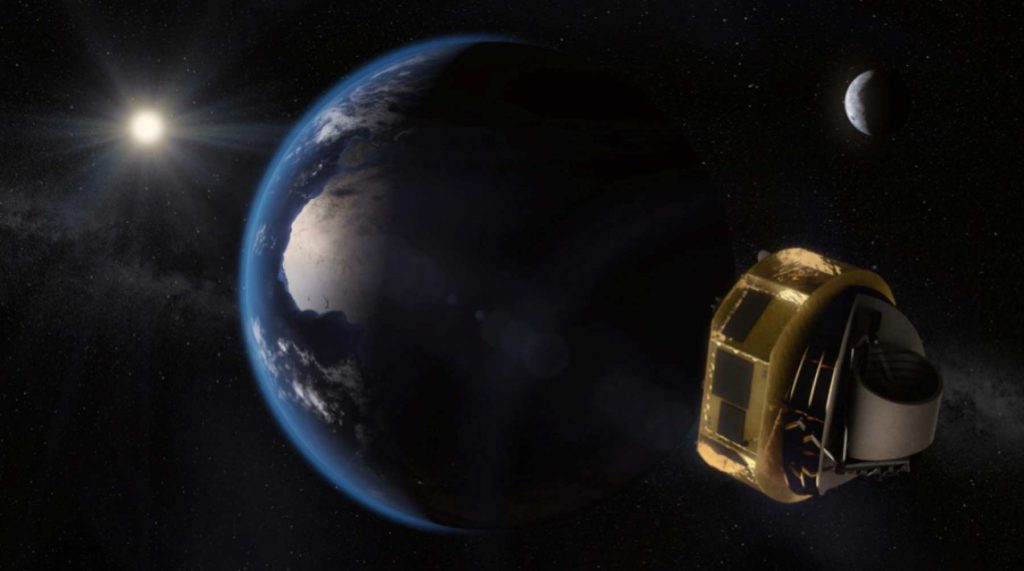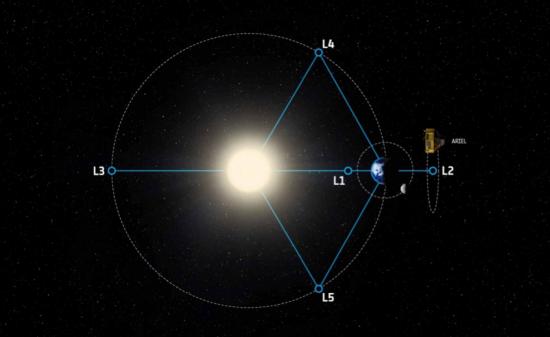ARIEL selected as ESA’s next medium-class science mission
ARIEL (Atmospheric Remote-sensing Exoplanet Large-survey) is one of the three candidate missions selected by the European Space Agency (ESA) for its next medium-class science mission due for launch in 2028. The goal of the ARIEL mission is to investigate the atmospheres of several hundreds planets orbiting distant stars in order to address the fundamental questions on how planetary systems form and evolve.
The ARIEL mission was proposed by a consortium of more than 60 institutes in 15 European countries, including researchers from the AIM laboratory, which oversees UnivEarthS.
During its 4-year mission, ARIEL will observe 1000 planets exoplanets ranging from Jupiter- and Neptune-size down to super-Earth size in the visible and the infrared with its meter-class telescope. The analysis of ARIEL spectra and photometric data will allow to extract the chemical fingerprints of gases and condensates in the planets’ atmospheres, including the elemental composition for the most favorable targets. It will also enable the study of thermal and scattering properties of the atmosphere as the planet orbit around the star.
ARIEL will address fundamental questions on what exoplanets are made of and how planetary systems form and evolve by investigating the atmospheres of hundreds of planets orbiting different types of stars, enabling the diversity of properties of both individual planets as well as within populations to be assessed.
Observations of these worlds will give insights into the early stages of planetary and atmospheric formation, and their subsequent evolution, in turn contributing to put our own Solar System in context.
“ARIEL is a logical next step in exoplanet science, allowing us to progress on key science questions regarding their formation and evolution, while also helping us to understand Earth‘s place in the Universe,” says Günther Hasinger, ESA Director of Science.
“ARIEL will allow European scientists to maintain competitiveness in this dynamic field. It will build on the experiences and knowledge gained from previous exoplanet missions.”
The mission will focus on warm and hot planets, ranging from super-Earths to gas giants orbiting close to their parent stars, taking advantage of their well-mixed atmospheres to decipher their bulk composition.
ARIEL will measure the chemical fingerprints of the atmospheres as the planet crosses in front of its host star, observing the amount of dimming at a precision level of 10–100 parts per million relative to the star.
As well as detecting signs of well-known ingredients such as water vapour, carbon dioxide and methane, it will also be able to measure more exotic metallic compounds, putting the planet in context of the chemical environment of the host star.
For a select number of planets, ARIEL will also perform a deep survey of their cloud systems and study seasonal and daily atmospheric variations.
ARIEL’s metre-class telescope will operate at visible and infrared wavelengths. It will be launched on ESA’s new Ariane 6 rocket from Europe’s spaceport in Kourou in mid 2028. It will operate from an orbit around the second Lagrange point, L2, 1.5 million kilometres directly ‘behind’ Earth as viewed from the Sun, on an initial four-year mission.
Following its selection by ESA’s Science Programme Committee, the mission will continue into another round of detailed mission study to define the satellite’s design. This would lead to the ‘adoption’ of the mission – presently planned for 2020 – following which an industrial contractor will be selected to build it.
ARIEL was chosen from three candidates, competing against the space plasma physics mission THOR (Turbulence Heating ObserveR) and the high-energy astrophysics mission XIPE (X-ray Imaging Polarimetry Explorer).
For further information, please contact:
Markus Bauer
ESA Science Communication Officer
Tel: +31 71 565 6799
Mob: +31 61 594 3 954
Email: markus.bauer![]() esa.int
esa.int


